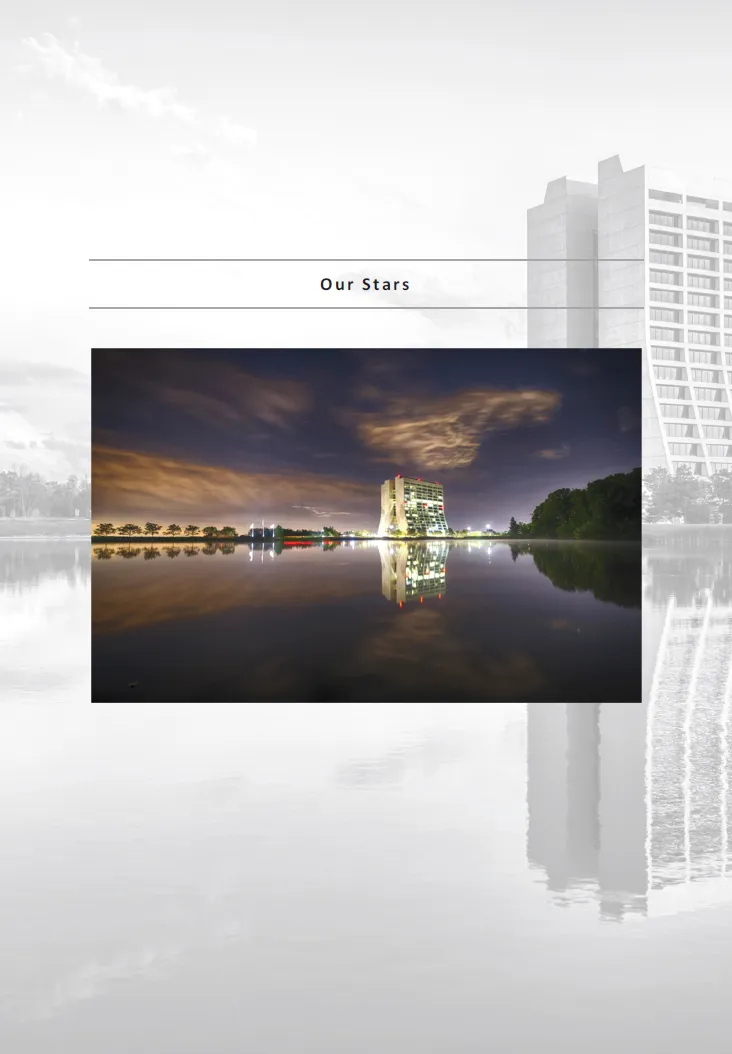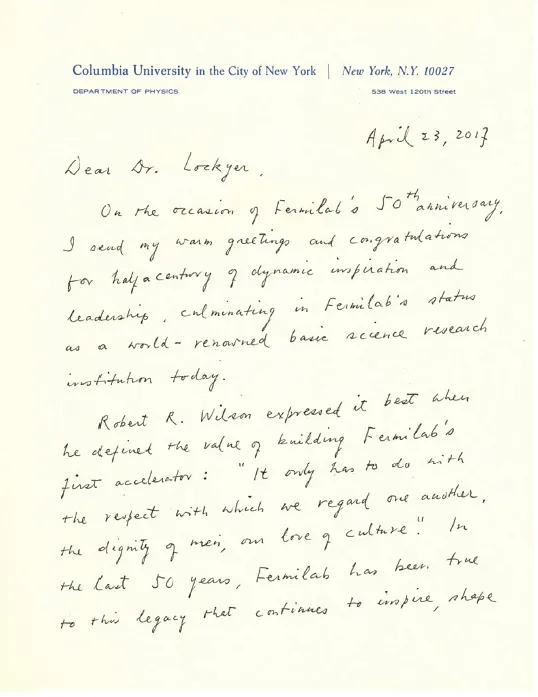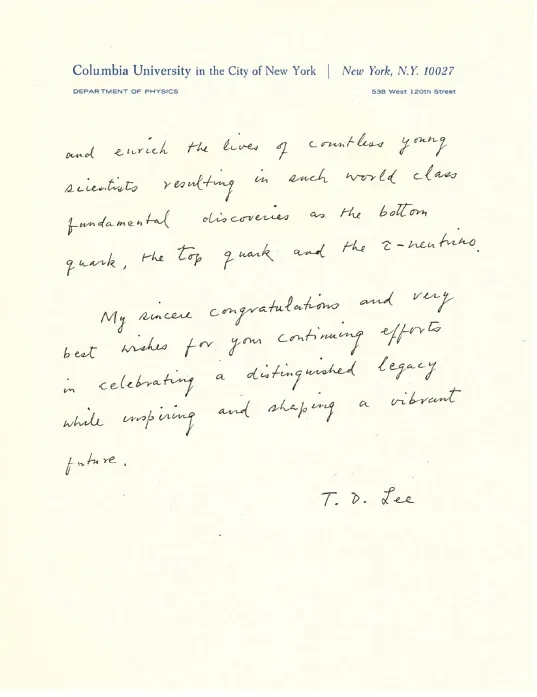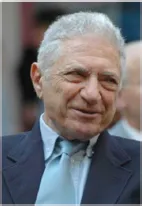
- 316 pages
- English
- ePUB (mobile friendly)
- Available on iOS & Android
Fermilab at 50
About This Book
-->
Fermilab — originally called the National Accelerator Laboratory — began operations in Illinois on June 15, 1967. Operated and managed by The University of Chicago and Universities Research Association, LLC for the US Department of Energy, it has the distinction of being the only US national laboratory solely dedicated to the advancement of high-energy particle physics, astrophysics and cosmology. It has been the site of major discoveries and observations: the top and bottom quarks; the tau neutrino; direct CP violation in kaon decays; a quasar 27 billion light years away from us; origin of high-energy cosmic rays; and confirmation of the evidence of dark energy, among others. For 25 years it operated the world's highest energy particle collider, the Tevatron. Fermilab contributed collaboratively to the Tevatron's successor, the Large Hadron Collider, which discovered the Higgs boson in 2012. Fermilab's core competencies in accelerators, superconducting technologies, detectors and computing have positioned the laboratory for a bright future at the frontiers of science. Today Fermilab scientists, engineers, technicians together with partners from 50 countries are working to explore the nature of the elusive neutrino, enable future x-ray photon science facilities, and construct and exploit higher-energy and higher-intensity particle accelerators. Fermilab is a designated "American Physical Society Historic Site".
In this commemorative volume, scientific leaders from around the world celebrate Fermilab's 50th anniversary with thoughts on the laboratory's past, present and future.
CONTRIBUTORS:
Norm Augustine (Ex-CEO, Lockheed Martin)
James D Bjorken (SLAC/Fermilab, Emeritus)
Fabiola Gianotti (Director-General, CERN)
Paul Grannis (Stony Brook University)
Randy Hultgren (US Representative from Illinois)
Eric Isaacs (VC for Research and Innovation, University of Chicago)
Neal Lane (Rice University)
T D Lee (Nobel Laureate, Columbia University, Emeritus)
Art McDonald (Nobel Laureate, Queens University/SNOLAB)
Naba Mondal (TIFR, India, Emeritus)
Burton Richter (Nobel Laureate, Director Emeritus, SLAC)
Gino Segrè (University of Pennsylvania, Emeritus)
James Siegrist (Director, DOE OHEP)
Nigel Smith (Director, SNOLAB)
Jack Steinberger (Nobel Laureate, CERN, Emeritus)
Michael Turner (Director, KICP, University of Chicago)
Yifang Wang (Director, IHEP, China)
Ed Witten (Princeton University)
Sau Lan Wu (University of Wisconsin, Madison)
Robert Zimmer (President, University of Chicago)
and many others.
-->
--> Contents:
- Congratulations to Fermilab (T D Lee)
- FNAL 50th Birthday Reminiscences (Burton Richter)
- Pepper and Salt, Enrico Fermi and Neutrinos (Jack Steinberger)
- Fifty Remarkable Years of Scientific Discovery (Dick Durbin)
- Fermilab: Personal Thoughts on a Remarkable Laboratory (Randy Hultgren)
- Fermilab at 50 (Norm Augustine)
- Reflections: Fermilab at 50 (Jonathan A Bagger)
- Fermilab/NIU: A Strong, Enduring Partnership (Douglas D Baker)
- Fermilab and SLAC: Looking Forward to Another Half-Century of Discovery (Chi-Chang Kao)
- Fermilab and China–US HEP Cooperation (Hesheng Chen)
- Forty Years of Association with Fermilab (Lyn Evans)
- Happy Birthday, Fermilab! (Fabiola Giannotti)
- A View from the Far Side (of the Tevatron Ring) (Paul Grannis)
- Fifty Years of Pioneering Coopetition! (Rolf-Dieter Heuer)
- Fermilab's Lasting Impact (Eric D Isaacs)
- Reminiscences of Fermilab, 1983–2006 (Rocky Kolb)
- Reflections from a Fermilab Admirer Across the Fields (Neal Lane)
- Two Icons and an Experiment (Nigel Lockyer)
- Fifty Years of Service — Congratulations, Fermilab! (Art McDonald and Nigel Smith)
- To Our Friends at Fermilab (Joachim Mnich)
- Fermilab: Unravelling the Secrets of Nature (Naba K Mondal)
- And Proud Too (Hugh Montgomery)
- Fermilab 2005–2013 (Pier Oddone)
- Growing as a Scientist with Fermilab (John Peoples)
- Thoughts on Fermilab at 50 (Jim Siegrist)
- Reflections on the Occasion of Fermilab's 50th Anniversary (Ken Stanfield)
- A Personal Journey from MINOS to DUNE (Mark Thomson)
- Fermilab and the Coming Together of the Inner and Outer Space (Michael S Turner)
- A Great Past and a Better Future (Yifang Wang)
- A Tribute to Bob Wilson and His Laboratory (Michael Witherell)
- Transition, Learning and Re-invention (John Womersley)
- The Future of Our Civilization Has its Roots in Our Labs (Antonino Zichichi)
- Thoughts on the 50th Anniversary of Fermilab (Robert J Zimmer)
- Site 29 (James Bjorken)
- Reflections on 25 Years of Research at Fermilab During the Tevatron Era (Bill Carithers)
- Message on the Occasion of Fiftieth Anniversary of Fermilab (CERN Staff Association)
- Some Personal Thoughts and Memories on the Occasion ofFermilab's 50th (Henry J Frisch)
- Reminiscences of a Fermilab Postdoc (Gian Francesco Giudice)
- Silver and Gold: 25 and 50 Years at FNAL (Tao Han)
- A Home Away from Home (Hélio da Motta)
- Volleyball Was Serious Then (Angela V Olinto)
- Visiting Fermilab: A Collection of Wonderful Memories (Silvia Pascoli)
- NAL's First Theory Group (P Ramond)
- Fermilab: Memory Flashes (Eliezer Rabinovici)
- Fermi's Globatron (Gino Segrè)
- Think Different (Maria Spiropulu)
- Born in Fermilab (Taku Yamanaka)
- Amazing Half Century of Discovery (Ed Witten)
- Fermilab — 50 Years of Great Achievements and a Land for Young Talents (Sau Lan Wu)
- Fermilab — My Newborn Land (Weimin Wu)
- R R Wilson's Congressional Testimony (April 1969)
- R R Wilson's Sculptures Around the Fermilab Site
- 1981 Summer School on High Energy Particle Accelerators — The First of Its Kind Around the World and Precursor to the Now Well-Established US Particle Accelerator Schools
- Photographs of Nobel Laureates' Visits to Fermilab
- Fermilab Timeline:1963–2017
- An Artwork Inspired by R R Wilson
-->
--> Readership: Academics and general readers in particle physics. -->
Keywords:Fermilab;Particle Physics;High Energy Physics;Particle AccelaratorReview:
"My 40 years of association with Fermilab has been exciting and memorable. I have worked with many very competent, dedicated and sometimes colorful characters with whom I have made friends. I look forward to a continuing collaboration... Happy 50th anniversary Fermilab!"
Lyndon Evans
Director, Linear Collider Collaboration
"It's been a pleasure watching Fermilab over the years as it has produced some of the most significant discoveries in physics and now as an involved participant as Fermilab aspires to carry out the world's most ambitious experiments."
Eric Isaacs
VP for Research and Innovation, University of Chicago
"In the last 50 years, Fermilab has been true to this legacy that continues to inspire, shape and enrich the lives of countless young scientists resulting in such world-class fundamental discoveries as the bottom quark, the top quark and the tau neutrino."
T D Lee
Nobel Laureate
"As Fermilab celebrates its 50th in 2017, I am gratefully reminded of the contributions and support to our laboratory at critical times of its development by scientists and scientific leaders from around the world. This commemorative book captures the sentiments of some of these special colleagues, especially what Fermilab has meant to them and their thoughts on its current status and future evolution."
Nigel Lockyer
Director, Fermilab
"Congratulations to Fermilab on 50 years of service and leadership to the particle physics community... in collaborations for experiments in underground laboratories such as SNOLAB. Fermilab scientists are an integral part of the SNOLAB community... we look forward to many years of great science."
A McDonald, Nobel Laureate and
N Smith, SNOLAB Director
"On the occasion of Fermilab's 50th birthday I am happy to offer my congratulations on the lab's past successes and best wishes for its future. There has been much technical and scientific collaboration between Fermilab and SLAC over the last 50 years."
Burton Richter
Nobel Laureate
"Jim Cronin... decided to have another look at the energy vs. time graph Fermi had plotted... The point in the graph corresponding to Fermilab's initial run lies a little below the Fermi line and the one for the Tevatron a little above it, in large part due to Bob Wilson, Fermilab's visionary first director."
Gino Segrè
Emeritus Professor, University of Pennsylvania
"Enrico Fermi is one of the greatest physicists of all time whom I have personally known and worked with. Fermilab should be very proud of being named after Fermi. It is a major laboratory of particle physics... my best wishes... on its 50th anniversary."
J Steinberger
Nobel Laureate
"Robert Wilson had a vision of the laboratory as a cultural, recreational and educational center for the surrounding community, as well as a global research center open to the international scientists... Bob Wilson's legacy survives at Fermilab, in the surrounding communities and in the world of science."
Mike Witherell
Director, Lawrence Berkeley National Laboratory
"What an amazing half century of discovery this has been! Neutral currents, high energy neutrino interactions, jets, bottom quarks, top quarks, tau neutrinos, tests of quantum chromodynamics and the full Standard Model — Fermilab has played a central role in an epochal period. There is much to be proud of as we look back, and hopefully the next half century will be just as eventful."
Ed Witten
Princeton University
0
Frequently asked questions
Information


Congratulations to Fermilab


About T. D. Lee

About Burton Richter

About Jack Steinberger

Table of contents
- Cover
- Halftitle
- Title
- Copyright
- Preface
- Acknowledgments
- Editors’ and Publisher’s Note
- About the Editors
- Contents
- Prologue
- PERSONAL ESSAYS, NOTES, AND LETTERS
- HISTORICAL DOCUMENTS, IMAGES, EVENTS, AND VISITS